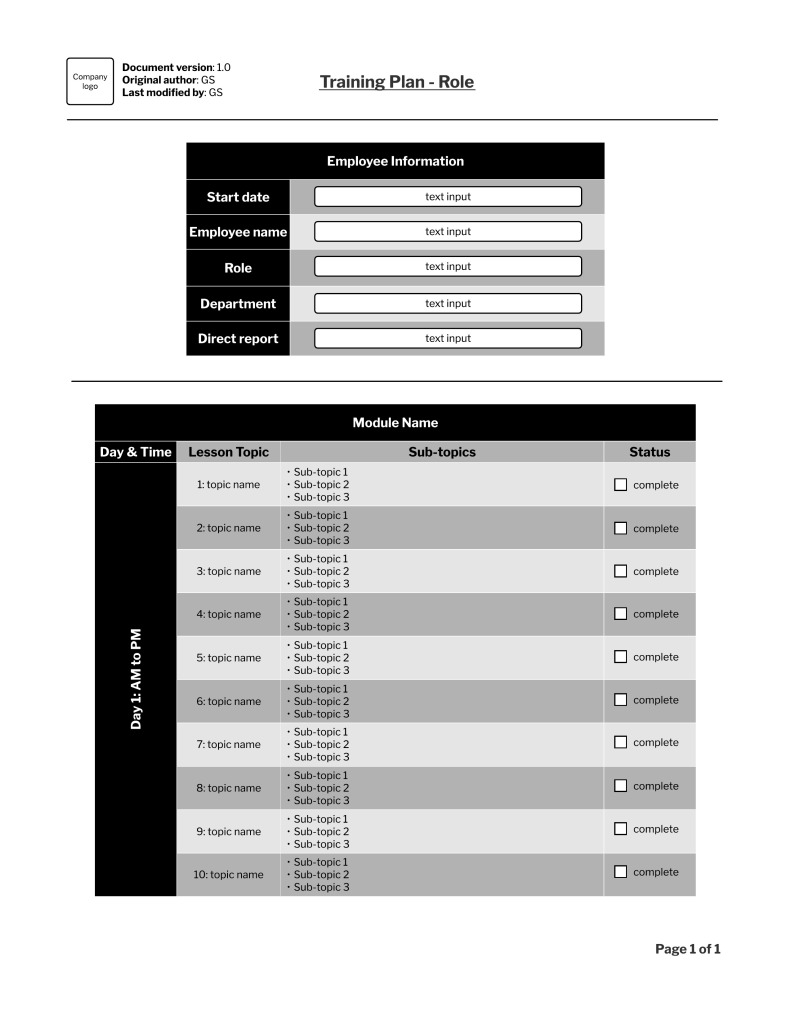Overview
This document features an employee training plan template. Trainers can make use of this with new individuals joining an organization or existing members. The plan follows a three-part structure; a header, employee information, and a module table.
If you are interested in the post-training stage, refer to the Employee Training Evaluation Profile page.
Table of Contents
Plan
You can click on the image below to expand its view. Its page format is letter size (8.5 x 11 inches) for printing.
Header
The header of the plan includes the following elements:
- Company logo: for branding purposes
- Document version: this is the current version of the documentation and exists for document control purposes.
- Original author: these initials belong to the individual who created the initial document.
- Last modified by: these initials belong to the individual who completed the document’s latest edit(s).
- Title: the title of the document indicates it is a training plan and what specific role will use it.
Employee Information
This section allows text to be freely input into five fields related to the employee:
- Start date: this represents the date training was started.
- Employee name: this is the first and last name of the employee. As it is an open text field, you can include other information such as a middle name or preferred name.
- Role: this is the employee’s job title.
- Department: this is the employee’s organization group.
- Direct report: this represents who is responsible for managing the employee’s workload and monitoring their performance. It could be a director, manager, supervisor, etc.
Module Table
This table sets what the employee can expect during a given training session or set of sessions. You can scale this portion of the document up if more than one day of training is required.
Please refer to the breakdown below for more information on the table’s elements:
- Module name: this represents the name of the collective set of lessons—for example, training for the use of a client relationship management system. The module name could be “Client Relationship Management.”
- Day & time: this presents the day and time of coverage. For example, on the first day of employment, this would represent day 1. It also allows a time to be input (e.g. 9 AM to 3 PM).
- Lesson topic: this represents individual aspects of the entire module—for example, using a client relationship management system. The lessons would show the employee a high-level overview, completion of a search, data entry, etc.
- Sub-topics: this represents the building blocks for each lesson. For example, suppose an employee needs a high-level overview of a client relationship management system. In that case, they will need to know how to log in, how supporting teams use it, and how it fits into the larger organization scheme.
- Status: this includes a checkbox used to indicate if the employee has completed that lesson.
